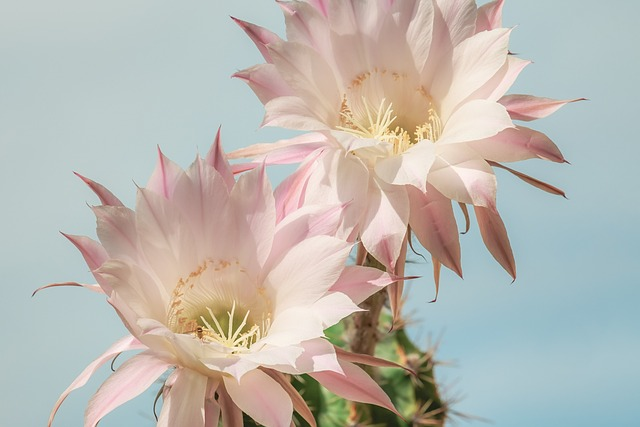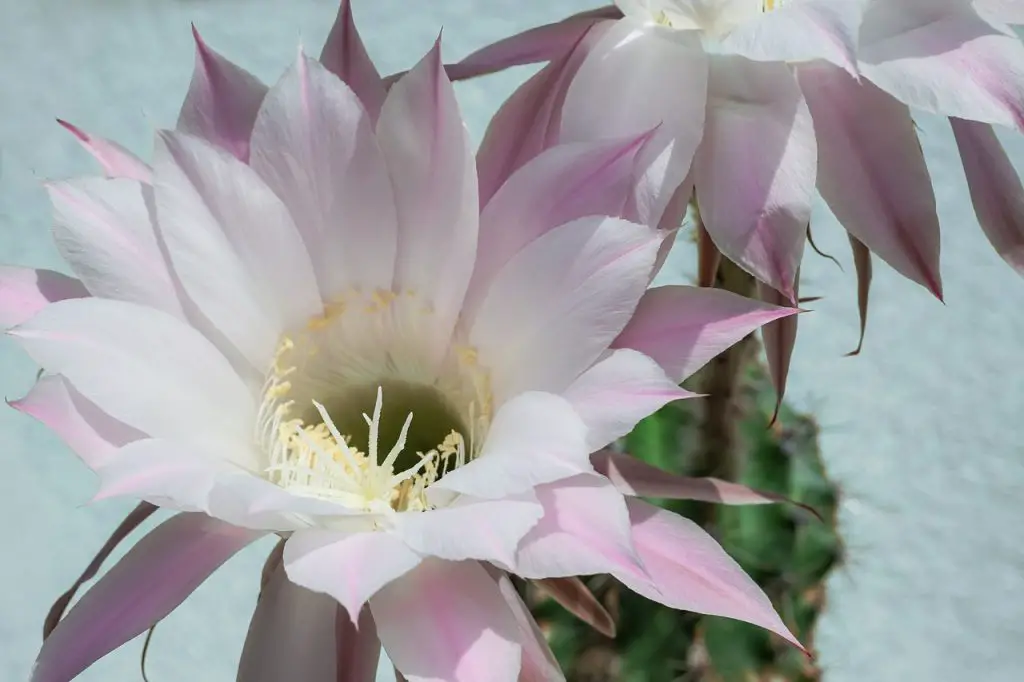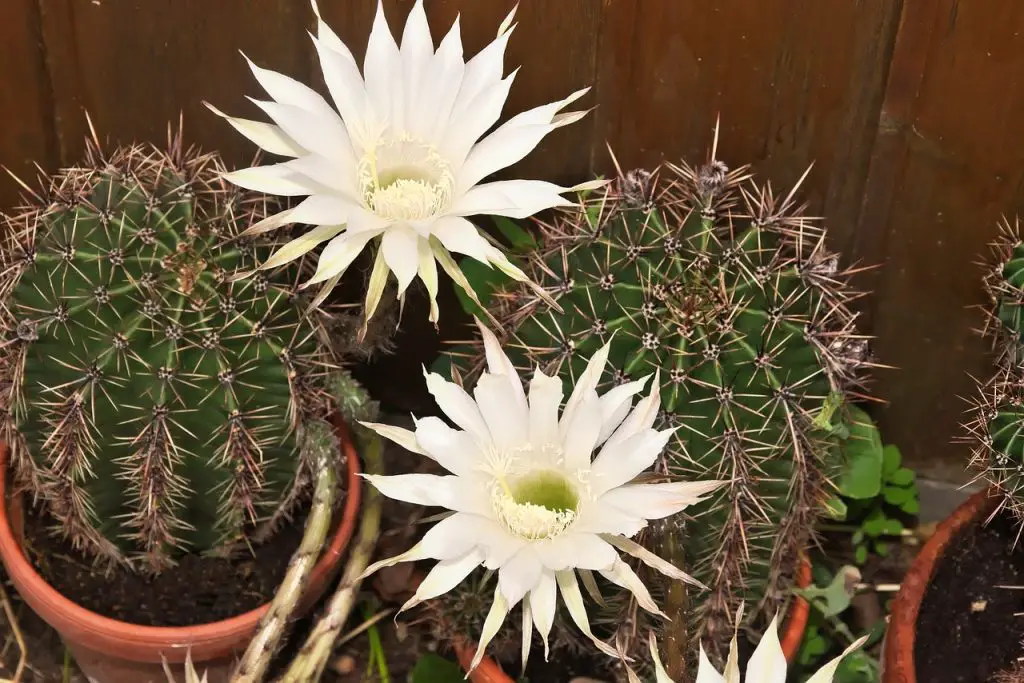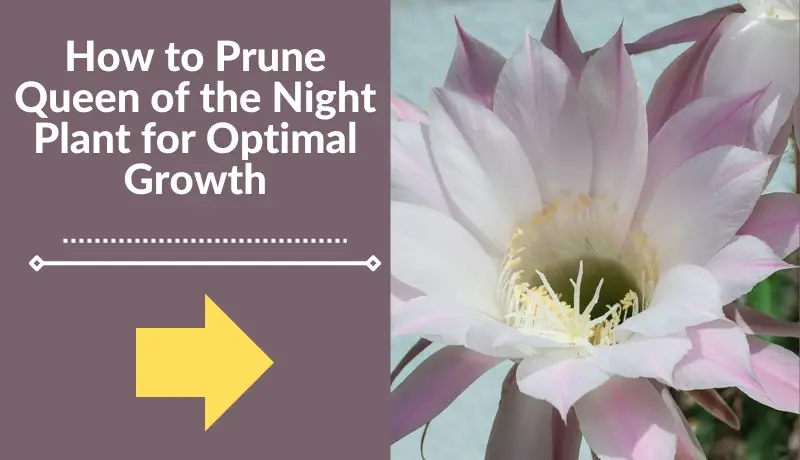Are you ready to witness the stunning beauty of your Queen of the Night Plant in full bloom? With proper pruning techniques, you can encourage healthy growth and enjoy those breathtaking flowers produced by these amazing cactus! Let us take you through the exciting journey of “how to prune Queen of the Night Plant” for optimal growth.
Short Summary
- Experience the magical night blooms of the Queen of the Night Plant with proper pruning care!
- Prune your plant in late winter or early spring for a beautiful and magical display, following an exciting step-by-step guide.
- Fertilize and water post-pruning to promote recovery & monitor health for vibrant growth!
The Importance of Pruning for Queen of the Night Plant

Pruning the Queen of the Night Plant is essential to unlock its full potential. This unique plant, also known as night cactus or orchid cactus, requires proper care to thrive and produce its enchanting flowers. By pruning, you stimulate new growth, which in turn encourages the plant to produce more beautiful flowers. But that’s not all! Pruning also helps maintain the plant’s shape and size, ensuring a healthy, well-balanced growth.
You might wonder, “What makes the Queen of the Night Plant so special?” This nocturnal bloomer, native to Southern Mexico, truly lives up to its name by producing mesmerizing flowers that open only at night. With proper care, you can experience the magic of its night blooms right in your garden!
Now that you know the importance of pruning, it’s crucial to understand the specific needs of the Queen of the Night Plant. These epiphytic plants grow best in locations with afternoon shade and thrive in rich, compost-like soil with a pH range between 5.5 and 6.5. And don’t forget to maintain a humidity level of around 50% to keep your plant happy and healthy.
So, are you ready to embark on this pruning adventure? Let’s dive into the basics of pruning, and discover the tools and techniques needed to care for your Queen of the Night Plant!
Pruning Basics: Tools and Techniques

Before we start snipping away, it’s essential to gather the right tools and learn the basic techniques for pruning the orchid cactus night cactus. For a successful pruning session, you’ll need sharp pruning shears, gloves, and a clean, damp cloth. Hold your shears with confidence and get ready to make your plant flourish!
Keep in mind the basic techniques for pruning your plant. These include removing dead or damaged stems and leaves, cutting back overgrown stems, avoiding pruning during the blooming season, and handling the toxic sap with care.
Let’s delve deeper into the perfect pruning time and how to prepare your plant for pruning in the following sections.
Choosing the Right Time to Prune The Night Cactus
Timing is everything when it comes to pruning the Queen of the Night Plant. The best time to prune is in late winter or early spring, just before new growth begins. Pruning during this period helps promote healthy growth and flowering, ensuring a magical display of night blooms.
Queen of the Night Plants thrive in well-drained, airy soil, so make sure to provide the optimal growing conditions for your plant. With the right soil mixture and care, your plant will be ready for pruning and set to dazzle you with its beauty!
Preparing Your Queen of the Night for Pruning
Before you start pruning, it’s essential to prepare your Queen of the Night Plant. Begin by inspecting the plant for any signs of damage or disease and remove any dead or damaged branches. Assess the shape of the plant carefully. Make sure to identify which branches need to be pruned for optimal shape and size maintenance.
Having the right tools is crucial for a successful pruning session. Make sure you have your pruning shears, gloves, and a damp cloth ready. To prevent the spread of diseases, always clean your pruning shears between cuts.
With your tools prepared and your plant inspected, it’s time to start pruning!
Step-by-Step Guide to Pruning Queen of the Night Plant

Now that you’re all set, let’s begin the exciting process of pruning your Queen of the Night Plant! Follow these steps to encourage new growth and maintain your plant’s shape.
1. Choose the perfect time to prune, as discussed in section 2.1. 2. Prune away any residual flowers and withered or yellow leaves from the plant. Do this to maintain a healthy and flourishing plant. 3. Cut stems above a leaf node or flower buds to encourage new growth and maintain the plant’s shape. If you’re unsure whether a dry branch is still alive, peel back a small section of bark and trim away any dry branches to check for signs of life.
By following these steps, you’ll be on your way to a healthy, well-pruned Queen of the Night Plant!
Common Pruning Mistakes and How to Avoid Them

Pruning your Queen of the Night plant might seem daunting, but don’t worry! We’re here to help you avoid common mistakes and ensure a successful pruning experience. Some common pruning mistakes include overpruning, pruning in the wrong season, not cleaning tools between cuts, and not wearing protective gear.
To avoid these mistakes and keep your plant healthy, make sure to prune only when necessary, use clean tools, prune at the right time of year, and wear protective gear. By following these precautions, you’ll be a pruning pro in no time!
Remember, proper pruning techniques are essential for your plant’s health and growth. By avoiding common mistakes and using the right tools and techniques, you’ll ensure the Queen of the Night Plant thrives and produces those enchanting night blooms.
Post-Pruning Care: Watering and Fertilizing

Your plant has been pruned, and now it’s time for some post-pruning care! Water and fertilize your Queen of the Night Plant after pruning to aid recovery and promote growth. To ensure your plant gets the nutrients it needs, use cactus-type food with a low nitrogen concentration of 10% or less. You can even use organic matter-rich compost instead of chemical fertilizer for a more eco-friendly approach.
The best time to fertilize your plant is during the growing season, in spring and autumn. Avoid fertilizing in winter and summer when the plant is dormant. While watering and fertilizing, be sure to check the soil to prevent over or under-watering.
Post-pruning care is crucial for your plant’s recovery and overall health. By monitoring your plant’s needs and providing proper care, your Queen of the Night Plant will flourish and produce those mesmerizing flowers you adore!
Monitoring the Plant’s Health After Pruning
After pruning and providing post-pruning care, it’s essential to monitor your Queen of the Night Plant’s health. Keep an eye out for signs of stress and adjust your care routine accordingly. Be vigilant for common diseases, such as fungal leaf spot and root rot, which can affect your plant’s health.
If you discover your plant has root rot, it’s best to start over with a new plant. Destroy the affected plant and soil, and sanitize the pot before reusing it with a new plant.
By monitoring your plant’s health and adapting your care routine when necessary, you can ensure a thriving, healthy Queen of the Night Plant!
Get to Pruning
Congratulations! You’re now equipped with the knowledge and skills to prune your Queen of the Night Plant for optimal growth. By following our step-by-step guide and avoiding common pruning mistakes, you’ll be on your way to enjoying the captivating beauty of your plant’s night blooms. Remember, proper care and monitoring are essential for your plant’s health and growth. So, go ahead and embrace the magic of the Queen of the Night Plant – and happy pruning!
Frequently Asked Questions
How do you trim a night blooming cactus?
Grow your night blooming cactus with ease by trimming it! Simply cut the side shoots where they form a Y, leaving the main stem. Allow the cut ends to heal over by storing the cuttings in a warm dry place for two weeks.
How do I get my queen of the night to bloom?
Let your Queen of the Night bloom to its fullest potential! Provide your plant with sufficient sunlight by giving it indirect light for 6-8 hours daily. If your plant needs a bit more, introduce some direct morning light for a couple of hours to give it the boost it needs. Remember – don’t give it too much or you may risk burning the leaves! Enjoy the beautiful blooms!

David, the founder of The Garden Fixer, started with a passion for gardening in 2012. He has continued his passion for gardening and desire to improve his skills and wanted to share his journey and helpful knowledge with other like-minded individuals.
He launched The Garden Fixer as an outlet for those interested in learning more about Gardening in hopes they can take what they learn and apply it for themselves!
